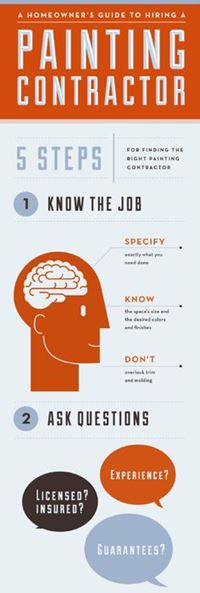Check Out The Duty Of Seasonal Factors In The Success Of Business Exterior Paint And Reveal The Very Best Times To Protect Enduring Outcomes For Your Task
Check Out The Duty Of Seasonal Factors In The Success Of Business Exterior Paint And Reveal The Very Best Times To Protect Enduring Outcomes For Your Task
Blog Article
Produced By-Korsholm Chaney
When you're preparing an industrial outside painting job, seasonal variables can make or damage your results. You'll wish to think about just how temperature level and moisture impact paint application and drying out times. Choosing the right season can ensure your paint sticks correctly and lasts much longer. But which ceiling and wall paint same color are truly the best for this kind of work? Allow's check out the crucial elements that can affect your job's success.
The Impact of Temperature on Paint Application
When you're preparing an industrial exterior paint job, the temperature can considerably impact just how well the paint sticks and dries.
Ideally, you want to repaint when temperature levels vary in between 50 ° F and 85 ° F. If it's as well cool, the paint may not cure properly, bring about problems like peeling off or breaking.
On the flip side, if it's too hot, the paint can dry out as well quickly, protecting against correct attachment and causing an unequal coating.
You need to likewise think about the moment of day; morning or late afternoon uses cooler temperature levels, which can be more favorable.
Constantly inspect the producer's suggestions for the specific paint you're making use of, as they commonly give guidance on the ideal temperature level array for ideal outcomes.
Moisture and Its Impact on Drying Times
Temperature level isn't the only environmental element that influences your business outside paint job; moisture plays a considerable role also. High humidity degrees can slow down drying out times significantly, affecting the general quality of your paint work.
When the air is filled with moisture, the paint takes longer to cure, which can lead to issues like inadequate bond and a greater risk of mildew development. If you're painting on an especially humid day, be gotten ready for extensive delay times in between layers.
It's vital to monitor neighborhood weather and plan appropriately. Preferably, go for humidity levels between 40% and 70% for optimal drying.
Maintaining read the full info here in mind guarantees your job remains on track and delivers a long-term surface.
Best Seasons for Commercial Outside Paint Projects
What's the very best season for your industrial external paint projects?
Spring and very early loss are typically your best choices. During these seasons, temperature levels are mild, and moisture degrees are frequently reduced, producing ideal problems for paint application and drying.
Prevent summer's intense heat, which can trigger paint to dry as well promptly, resulting in bad adhesion and coating. Likewise, wintertime's cool temperature levels can hinder appropriate drying and treating, running the risk of the long life of your paint work.
Aim for days with temperature levels between 50 ° F and 85 ° F for optimal results. Keep in mind to examine the local weather report for rain, as damp problems can destroy your job.
Planning around these elements guarantees your painting project runs efficiently and lasts longer.
Verdict
In conclusion, preparing your commercial outside paint tasks around seasonal factors to consider can make a significant difference in the result. By scheduling job throughout the excellent temperature levels and humidity degrees, you'll guarantee much better bond and drying times. Keep in mind to watch on local weather forecasts and choose the correct time of year-- spring and early autumn are your best choices. Taking these steps will assist you attain a sturdy and expert surface that lasts.
